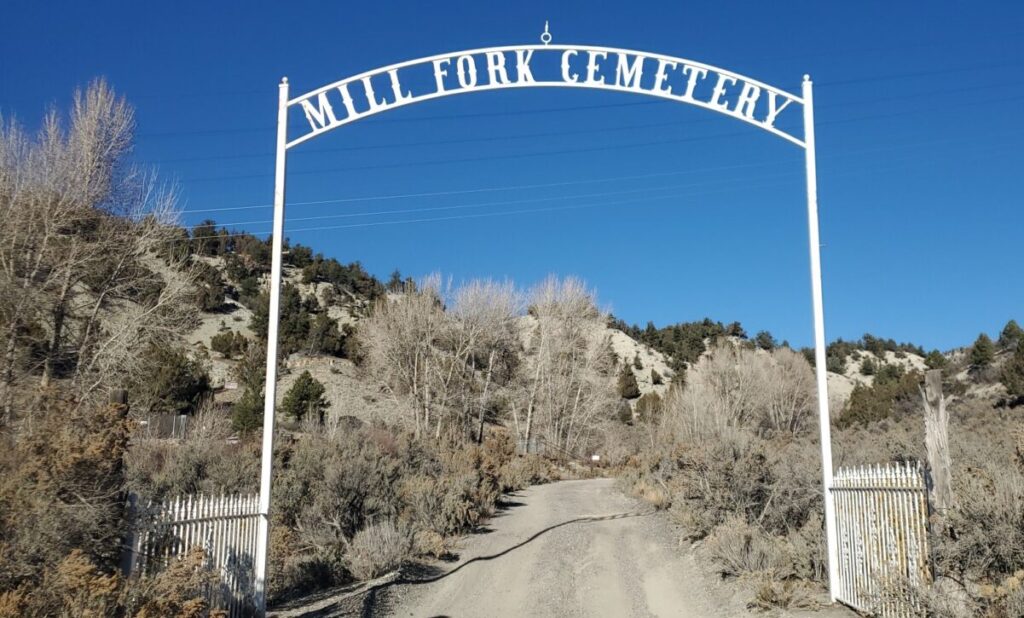Mill Fork Cemetery: A Blast From the Past in the Form of Graves
The cemetery was created in 1875 by a small logging camp under the Mill Fork name. The town itself lasted until around 1930.The first burials were documented in 1893; the last in 1926. Officially, the burial count is 17, but 46 burials are listed on the website Find A Grave.

The entrance to the Mill Fork Cemetery in Spanish Fork Canyon, Utah.
Driving through the Spanish Fork Canyon is not always easy, but the natural beauty surrounds the mostly two-lane highway. Most of the time, travelers are too focused on the road and not getting flung off into the canyon to notice the wrought iron gate just 23 miles into the drive, 45 miles when traveling from Price.
The small cemetery gates stand out with sun-bleached bone-white poles and an ornate face. They stand at the foot of the mountain. When walking into the open maw, visitors are greeted with a bridge to the left and what seems to be a parking lot in front of them. A small trail leads down to a picnic table where a trailhead points the way up the mountain.
Across the old wood and iron bridge a chicken wire fence surrounds a small portion of land. A weathered staircase leads visitors to a chicken-wired, wood-framed door. Upon entering, a metal flagpole with an equally metal American flag rests at the center of the graveyard. A right turn from the entrance leads to a tree with a few children’s toys placed around two headstones and a path to a separate fenced area and some planters. A walk into the fenced area, using another door, will lead visitors to ornate headstones, weathered from time. All have a disturbing, and depressing similarity: the death date ranges from a few days to the early years after the birth of a baby, which leaves no mistake that these are the final resting places of children.
As a common courtesy, the ghostly children may seem to want visitors’ to pay notice as they depart the area. Some visitors leave the gate left open for a moment before shutting it. From there, they either exit the cemetery as a whole (a “thank you” should be said before crossing the exit of the fenced area), or they continue straight past the flagpole to another section of the cemetery. The entire visit lasts a few minutes for those who look and leave, or it can last for roughly half an hour when looking at each gravesite and reading the names and dates.
The cemetery was created in 1875 by a small logging camp under the Mill Fork name. The town itself lasted until around 1930.The first burials were documented in 1893; the last in 1926. Officially, the burial count is 17, but 46 burials are listed on the website Find A Grave. Historians say the causes of death seem tragic, from murder-suicides to freak accidents to the Spanish Flu. All burials seem to have some sad tale attached.




